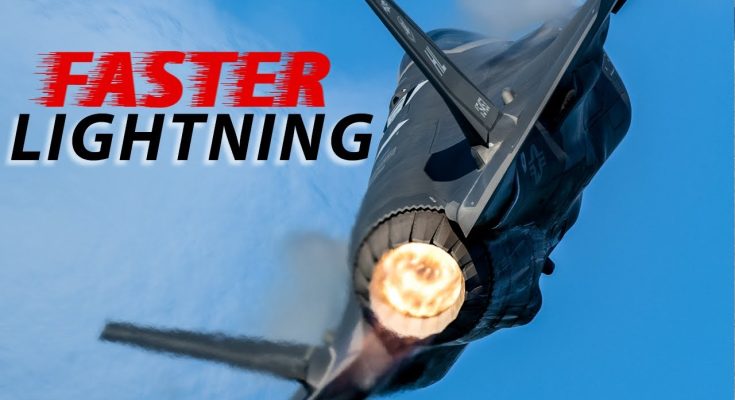The F-35 Lightning II has already earned its place as one of the most advanced fighter jets in the world, with its stealth capabilities, cutting-edge avionics, and unmatched versatility. However, even the most advanced aircraft need continual upgrades to remain at the forefront of technological innovation. Enter the Adaptive Engine Transition Program (AETP), an initiative designed to provide the F-35 with a powerful upgrade: the Adaptive Engine, which promises to push the Lightning II’s performance to new heights.
The standard F-35, as it stands, uses a Pratt & Whitney F135 engine, which has provided the aircraft with impressive thrust, fuel efficiency, and reliability. However, as threats evolve and mission requirements expand, it becomes necessary to push the boundaries of what the F-35 can do. The Adaptive Engine offers exactly that—improving key performance areas like fuel efficiency, thrust, and operational flexibility, which would help the F-35 maintain its edge over adversaries for years to come.
One of the primary goals of the Adaptive Engine is to significantly improve fuel efficiency. This is particularly crucial for the F-35, as its current engine’s fuel consumption can limit its operational range and endurance. With the introduction of an adaptive engine, the F-35 will be able to optimize its engine settings based on flight conditions, drastically reducing fuel consumption during long-range missions. This not only extends the aircraft’s operational range but also gives it a significant advantage in terms of logistics, allowing it to operate from locations further from the frontline without the need for frequent refueling.
The adaptive nature of the engine refers to its ability to adjust and optimize airflow to the engine’s core in real time. Unlike conventional engines that maintain a fixed bypass ratio, adaptive engines have the ability to change their bypass ratio depending on the speed, altitude, and mission profile. This allows the F-35 to maintain high efficiency at subsonic speeds (ideal for long-distance cruise flight) and maximize thrust during supersonic flight, without sacrificing fuel efficiency or engine performance. As a result, the F-35 would enjoy better performance across a wider range of mission scenarios, including both air-to-air and air-to-ground combat.
Speaking of thrust, the adaptive engine also promises to deliver improved engine power. With a more powerful and efficient engine, the F-35 will be able to operate with greater agility and speed, especially in combat situations. This enhanced thrust will help the aircraft maintain superior performance even when heavily loaded with weapons or during high-stress aerial maneuvers. With the increase in power, the F-35 will have an edge when facing increasingly advanced adversary aircraft that rely on speed and agility, ensuring that the Lightning II remains competitive in air superiority missions.
Another key advantage of the adaptive engine upgrade is the potential for maintenance and operational flexibility. The new engine technology will enable the F-35 to have a broader operational envelope, providing increased durability and lower lifecycle costs. The adaptive engine will allow for easier maintenance and more predictable performance, reducing the need for costly overhauls or extensive downtime.
The ongoing development and integration of the adaptive engine into the F-35 is a significant step in keeping the fighter jet relevant well into the future. While the F-35’s original design already sets the bar for modern military aircraft, this new engine technology is an example of how incremental upgrades can extend its capabilities and keep it competitive against emerging threats.
In conclusion, upgrading the F-35 with an adaptive engine will offer a major leap in performance, increasing fuel efficiency, thrust, range, and versatility. With this upgrade, the Lightning II will be able to stay ahead of evolving threats, ensuring that it remains one of the most dominant and effective multirole fighters in the world. The adaptive engine represents not just an enhancement for the F-35, but a glimpse into the future of military aviation, where flexibility, efficiency, and performance are paramount.



